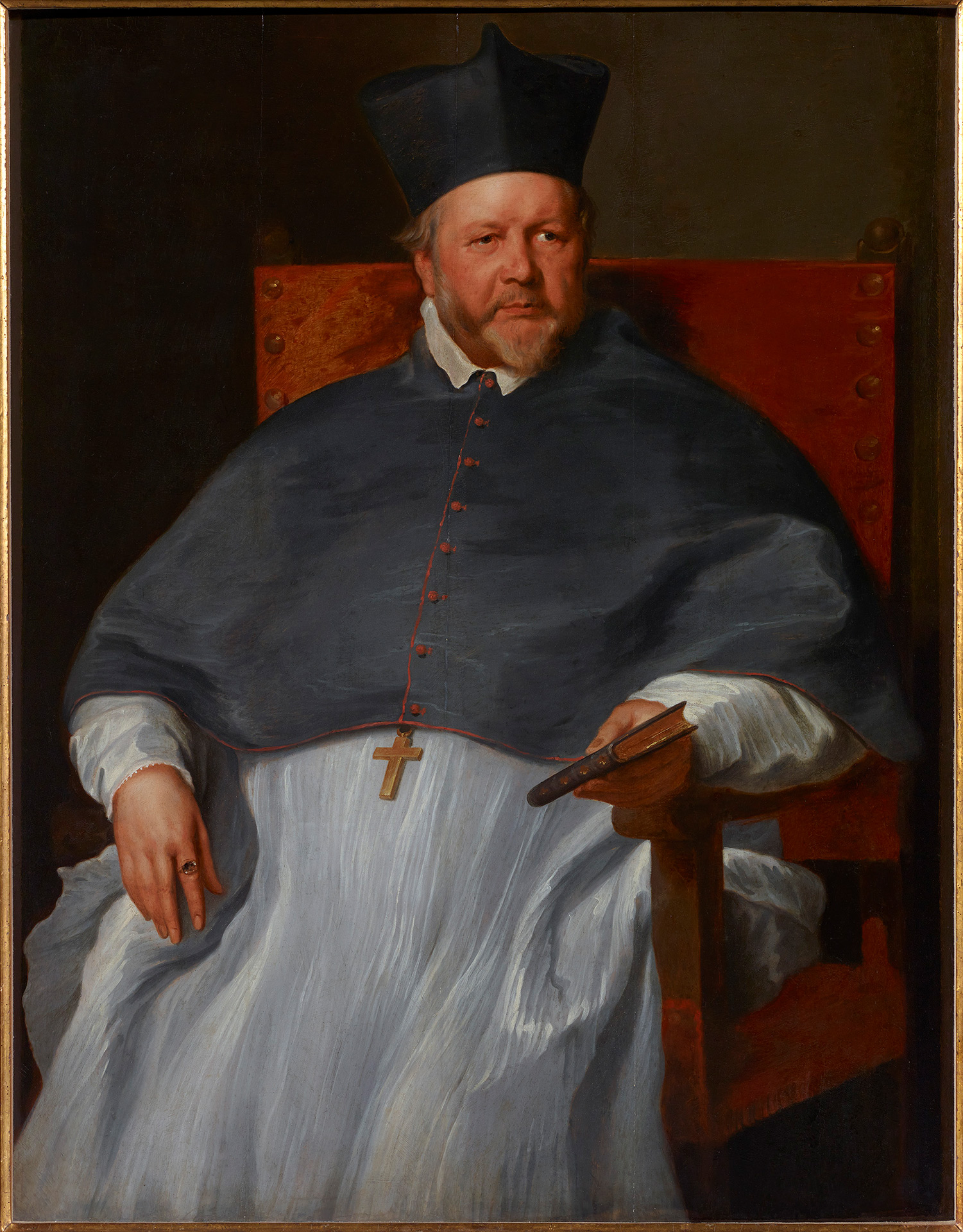
Antoon van Dyck (Antwerp, Belgium, 1599 – London, 1641)
Bishop Jan van Malderen
1628-1631
WORK INFORMATION
Oil on canvas, 125 x 97 cm
Born into a well-off Antwerp family, Antoon or Anthony van Dyck showed an unusual talent for painting from a very early age and initially trained under the painter Hendrick van Balen. When he was barely sixteen he went to work for Peter Paul Rubens, then the most prominent artist in the Netherlands. Theirs was not a typical master-apprentice relationship; in fact, Van Dyck never officially entered Rubens's workshop. The great artist facilitated his protégé's entry in the Antwerp painters' guild while Van Dyck was still quite young, allowing him to become an independent master. However, his relationship with Rubens endured and developed into a kind of collaboration between equals, in which Van Dyck placed his precocious skills at Rubens's service while learning and benefiting from his expertise, not only in matters of artistic technique but also with regard to the strategies of the painter's profession. This included the art of finding and dealing with patrons and the need to reproduce his own works in both painted and engraved versions to better publicise his artistic activity. In any event, in their relationship Rubens, who was twenty years older, probably played the role of instructor to a certain extent. Van Dyck remained under his powerful creative influence throughout his youth.
In 1621 Van Dyck left Antwerp and set out on a study tour of Italy that took him to cities like Genoa, Rome, Venice and Palermo where he earned great fame, particularly as a portraitist of the aristocracy. He painted numerous portraits in which he masterfully combined the loose brushwork learned in Venice with his special talent for psychological characterisation.
When he returned to Antwerp in 1628, he vied with his former teacher for the honour of being the most sought-after portraitist in the city, while demand for his religious paintings also began to grow thanks to the intense piety of his compositions. It was during this period that he painted the majority of his portraits, depicting the entire spectrum of relevant society in the Netherlands: politicians, military officers, scholars, clergymen and even fellow artists.
A case in point is the portrait of Diego de Mexía, Marquess of Leganés, a Spanish politician who spent much of his career in the service of Infanta Isabella, ruler of the Spanish Netherlands. In this full-length portrait, the sitter is festooned with all sorts of symbolic elements that identify him as a military man and member of the court, such as the sword, the scallop shell of the knightly Order of St. James, the key conferred upon gentlemen of the king's household and the writing desk. It is a rather traditional portrait, conceptually similar to the ones Velázquez was painting during the same period in Spain.
The portrait of Bishop Jan van Malderen is patently different but equally paradigmatic. Seated in a chair, like the great prelates portrayed by Raphael and Titian, the famous theologian and professor at the University of Leuven conveys a kindly impression of extreme erudition and piety thanks to the austere selection of characterising objects, limited to the habit, cross and book.
Van Dyck remained in Antwerp and enjoyed great success for several years. In 1632, after a brief stint in The Hague, he travelled to England and remained there to the end of his days as principal court painter to King Charles I. In London he achieved the international fame and exalted social status he had always desired, and his work decisively influenced the future development of English portrait painting. [José Juan Pérez Preciado]

